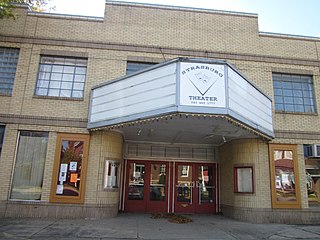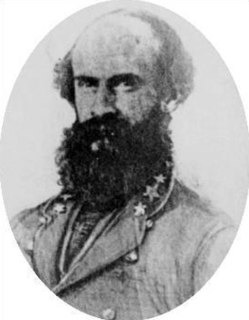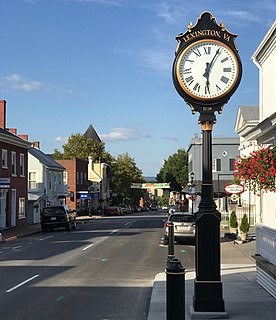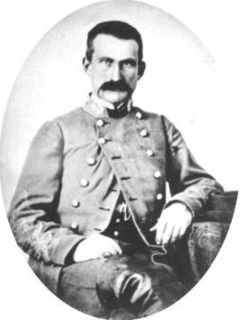
The Battle of New Market was fought on May 15, 1864, in Virginia during the Valley Campaigns of 1864 in the American Civil War. A makeshift Confederate army of 4,100 men, which included cadets from the Virginia Military Institute (VMI), defeated Union Major General Franz Sigel and his Army of the Shenandoah. The cadets were integral to the Confederate victory at New Market and this event marks the only time in U.S. history wherein the student body of a functioning and an operating college fought as an organized unit in pitched combat in battle. This event and battle was the 14th time VMI Cadets were called into action during the Civil War. As a result of this defeat, Sigel was relieved of his command and replaced by Maj. Gen. David Hunter, who later burned VMI in retaliation for New Market.
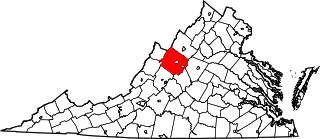
The Battle of Piedmont was fought June 5, 1864, in the village of Piedmont, Augusta County, Virginia. Union Maj. Gen. David Hunter engaged Confederates under Brig. Gen. William E. "Grumble" Jones north of Piedmont. After severe fighting, Jones was killed and the Confederates were routed. Hunter occupied Staunton on June 6 and soon began to advance on Lynchburg, destroying military stores and public property in his wake.
The Army of the Shenandoah was a Union army during the American Civil War. First organized as the Department of the Shenandoah in 1861 and then disbanded in early 1862, it became most effective after its recreation on August 1, 1864, under Philip Sheridan. Its Valley Campaigns of 1864 rendered the Shenandoah Valley of Virginia unable to produce foodstuffs for the Confederate States Army, a condition which would speed the end of the Civil War.

The Battle of Cedar Creek, or Battle of Belle Grove, fought October 19, 1864, was the culminating battle of the Valley Campaigns of 1864 during the American Civil War. Confederate Lt. Gen. Jubal Early launched a surprise attack against the encamped army of Union Maj. Gen. Philip Sheridan, across Cedar Creek, northeast of Strasburg, Virginia. During the morning fighting, seven Union infantry divisions were forced to fall back and lost numerous prisoners and cannons. Early failed to continue his attack north of Middletown, and Sheridan, dramatically riding to the battlefield from Winchester, was able to rally his troops to hold a new defensive line. A Union counterattack that afternoon routed Early's army.

The Battle of Monocacy was fought on July 9, 1864, approximately 6 miles (9.7 km) from Frederick, Maryland, as part of the Valley Campaigns of 1864 during the American Civil War. Confederate forces under Lt. Gen. Jubal A. Early defeated Union forces under Maj. Gen. Lew Wallace. The battle was part of Early's raid through the Shenandoah Valley and into Maryland in an attempt to divert Union forces away from Gen. Robert E. Lee's army under siege at Petersburg, Virginia. The battle was the northernmost Confederate victory of the war. While the Union troops retreated to Baltimore, Maryland, the Confederates continued toward Washington, D.C., but the battle at Monocacy delayed Early's march for a day, allowing time for Union reinforcements to arrive in the Union capital. The Confederates launched an attack on Washington on July 12 at the Battle of Fort Stevens, but were unsuccessful and retreated to Virginia.
The Army of West Virginia served in the Union Army during the American Civil War and was the primary field army of the Department of West Virginia. It campaigned primarily in West Virginia, Southwest Virginia and in the Shenandoah Valley. It is noted for having two future U.S. presidents serve in its ranks: Rutherford B. Hayes and William McKinley, both from the 23rd Ohio Infantry. With fighting in the Valley ended, the Army of West Virginia's designation was discontinued.

The Third Battle of Winchester, was fought just outside Winchester, Virginia, on September 19, 1864, during the Valley Campaigns of 1864 in the American Civil War.

Robert Emmett Rodes was a Confederate general in the American Civil War, and the first of Robert E. Lee's divisional commanders not trained at West Point. His division led Stonewall Jackson's devastating surprise attack at the Battle of Chancellorsville; Jackson, on his deathbed, promoted Rodes to major general. Rodes then served in the corps of Richard S. Ewell at the Battle of Gettysburg and in the Overland Campaign, before that corps was sent to the Shenandoah Valley under Jubal Early, where Rodes was killed at the Third Battle of Winchester.
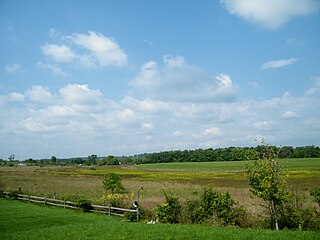
The Second Battle of Kernstown was fought on July 24, 1864, at Kernstown, Virginia, outside Winchester, Virginia, as part of the Valley Campaigns of 1864 in the American Civil War. The Confederate Army of the Valley under Lt. Gen. Jubal A. Early soundly defeated the Union Army of West Virginia under Brig. Gen. George Crook and drove it from the Shenandoah Valley back over the Potomac River into Maryland. As a result, Early was able to launch the Confederacy's last major raid into northern territory, attacking the Baltimore and Ohio Railroad in Maryland and West Virginia and burning Chambersburg, Pennsylvania, in retaliation for the burning of civilian houses and farms earlier in the campaign.
The Battle of Lynchburg was fought on June 17–18, 1864, two miles outside Lynchburg, Virginia, as part of the American Civil War. The Union Army of West Virginia, under Maj. Gen. David Hunter, attempted to capture the city but was repulsed by Confederate Lt. Gen. Jubal Anderson Early.

The Battle of Fisher's Hill was fought September 21–22, 1864, near Strasburg, Virginia, as part of the Valley Campaigns of 1864 during the American Civil War. Despite its strong defensive position, the Confederate army of Lt. Gen. Jubal Early was defeated by the Union Army of the Shenandoah, commanded by Maj. Gen. Philip Sheridan.
XIX Corps was a corps of the Union Army during the American Civil War. It spent most of its service in Louisiana and the Gulf, though several units fought in Virginia's Shenandoah Valley.
The Army of the Valley was the name given to the army of Lt. Gen. Jubal Early's independent command during the Shenandoah Valley Campaigns in the summer and autumn of 1864. The Army of the Valley was the last Confederate unit to invade Northern territory, reaching the outskirts of Washington, D.C.. The Army became defunct after its decisive defeat at the Battle of Waynesboro, Virginia, on March 2, 1865.
The Battle of Tom's Brook was fought on October 9, 1864, in Shenandoah County, Virginia, during Philip Sheridan's Shenandoah Valley Campaign of the American Civil War. It resulted in a significant Union victory, one that was mockingly dubbed The Woodstock Races for the speed of the Confederate withdrawal.
The 54th Pennsylvania Volunteer Infantry was an infantry regiment which served in the Union Army during the American Civil War.
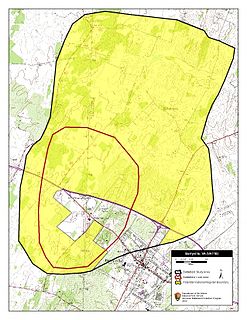
The Battle of Berryville was fought September 3 and September 4, 1864, in Clarke County, Virginia. It took place toward the end of the American Civil War.
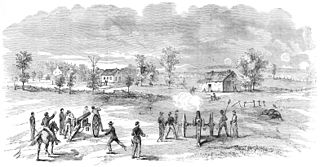
The Battle of Summit Point, also known as Flowing Springs or Cameron's Depot, was an inconclusive battle of the American Civil War fought on August 21, 1864, near Summit Point, West Virginia.
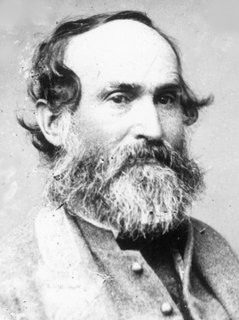
Jubal Anderson Early was a Virginia lawyer and politician who became a Confederate general during the American Civil War. Trained at the United States Military Academy, Early resigned his U.S. Army commission after the Second Seminole War and his Virginia military commission after the Mexican–American War, in both cases to practice law and participate in politics. Accepting a Virginia and later Confederate military commission as the American Civil War began, Early fought in the Eastern Theater throughout the conflict. He commanded a division under Generals Stonewall Jackson and Richard Ewell, and later commanded a corps. A key Confederate defender of the Shenandoah Valley, during the Valley Campaigns of 1864, Early made daring raids to the outskirts of Washington, D.C., as well as far as York, Pennsylvania, securing money and supplies which delayed the Confederate surrender for several months. After the war, Early fled to Mexico, then Cuba and Canada, and upon returning to the United States took pride as an "unrepentant rebel". Particularly after the death of Gen. Robert E. Lee in 1870, Early delivered speeches establishing the Lost Cause, as well as helped found the Southern Historical Society and memorial associations.
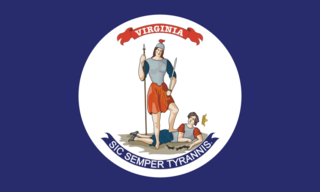
The 45th Virginia Volunteer Infantry Regiment was an infantry regiment raised in the Commonwealth of Virginia for service in the Confederate States Army during the American Civil War. It fought mostly in the mountainous area that today encompasses the border regions of Virginia and West Virginia, and was part of Jubal Early's Army of the Valley during the Valley Campaigns of 1864.

The 20th Pennsylvania Cavalry was a cavalry regiment of the Union Army which fought during the American Civil War. Also known as the 181st Pennsylvania Volunteers, it was initially led by Colonel John E. Wynkoop, Lieutenant Colonel William Rotch Wister, and Major Samuel W. Comly.












